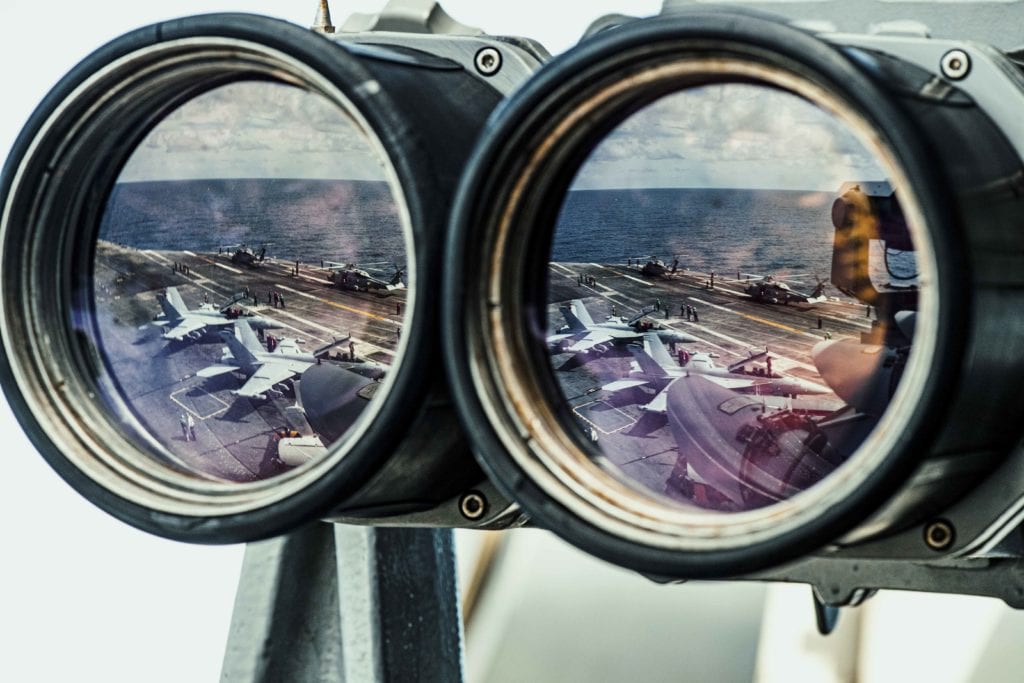
ARLINGTON, Va. — The naval build-ups and more frequent activity of the Chinese and Russian navies in recent years is keeping the U.S. Navy’s intelligence activities busily engaged in collection and analysis.
“Business is good; there’s lots of opportunity out there,” said Vice Adm. Jeffrey Trussler, deputy chief of naval operations for Information Warfare and director of Naval Intelligence, speaking April 6 at a Navy League Special Topic Breakfast sponsored by General Dynamics, commenting on the need for increased attention to the near-peer competitors.
“Day to day, talk about information overload!” Trussler said. “The daily questions that might come out of ‘What if?’ [are] non-stop. In this 21st century, information is available. We want to develop capabilities that best position us, best give us advantage in the competitive space. We want to develop capabilities that might cause adversaries pause and say, ‘Not today.’”
Trussler said the Navy’s job is to be ready.
“We don’t want a kinetic event,” he said. “We would love to prevent it, showing that strength, understanding what their vulnerabilities are, what their capabilities are, how we might counter [them], how we might demonstrate that we’re ready, we know where you are, and what you [doing]. That’s the cat and mouse that goes on right now.”
The admiral said the Navy needs to be ready from day one if deterrence fails.
“Day one doesn’t happen because of what we do day minus one,” he said. “That is what Navy intel, in alignment and in conjunction with the larger intelligence community, is looking for: those opportunities and vulnerabilities at day minus one, or day minus two … before weapons fly.
“In the 21st century, before weapons fly, there is a lot that is going to be happening in the domains that are hard to get your arms around of at sea,” he said. “That’s the elbowing that goes on right now for information advantage, a little different than what was going on in the Cold War, a little more human-oriented advantage for information that’s taking place day after day in the cyber world.”
Trussler said that the intelligence community is trying to stretch the timeline of warning as much as possible.
“We’d like it to be of days,” he said. “If not, we’d like it to be in hours, but it may be only minutes or seconds, so that’s why we’ve got to develop the systems and the processes that can take advantage of that at the speed that commanders need to make decisions and hold that advantage.”
- SECNAV Advocates Increased Legal Immigration to Increase Shipbuilder Workforce - April 23, 2024
- Insitu Going Strong at 30, Focusing on Maritime Operations - April 8, 2024
- Navy Awards Boeing Additional Funds for MQ-25 Drones for Testing - April 3, 2024






